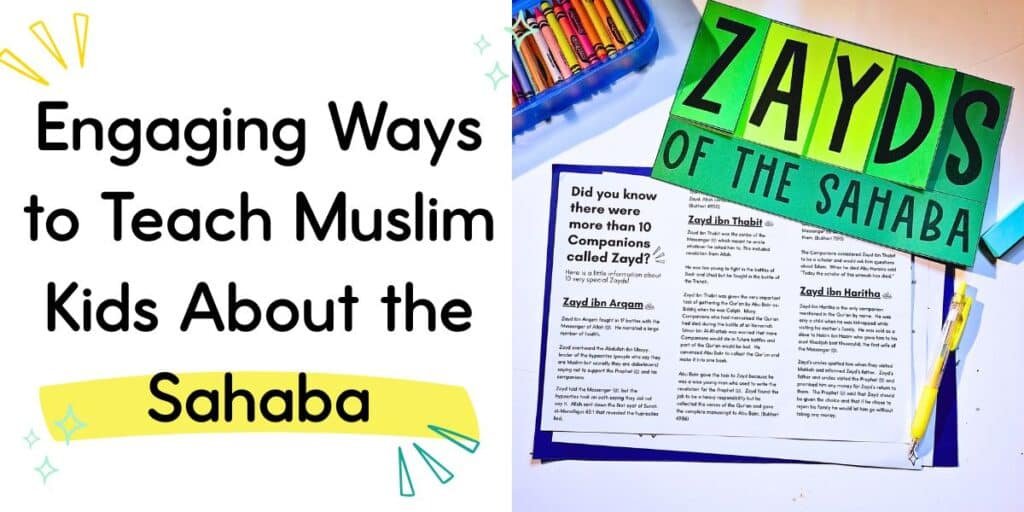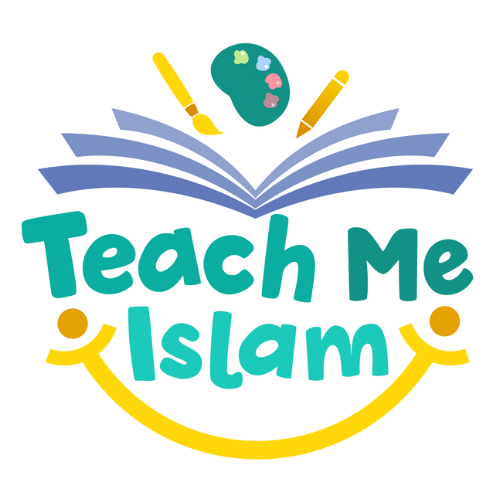Teaching our children about the Sahaba is one of the most rewarding ways to instil Islamic values and nurture a deep connection to their faith. The Sahaba, the companions of the Prophet Muhammad (peace and blessings be upon him), played an essential role in shaping the foundations of Islam, and their lives are filled with examples of courage, sincerity, and devotion. Introducing these role models to our children can not only inspire them but also help them appreciate their legacy and importance. In this post, we’ll explore practical and engaging ways to teach your kids about the Sahaba—whether through Hadith, Seerah, books, or structured biography packs.
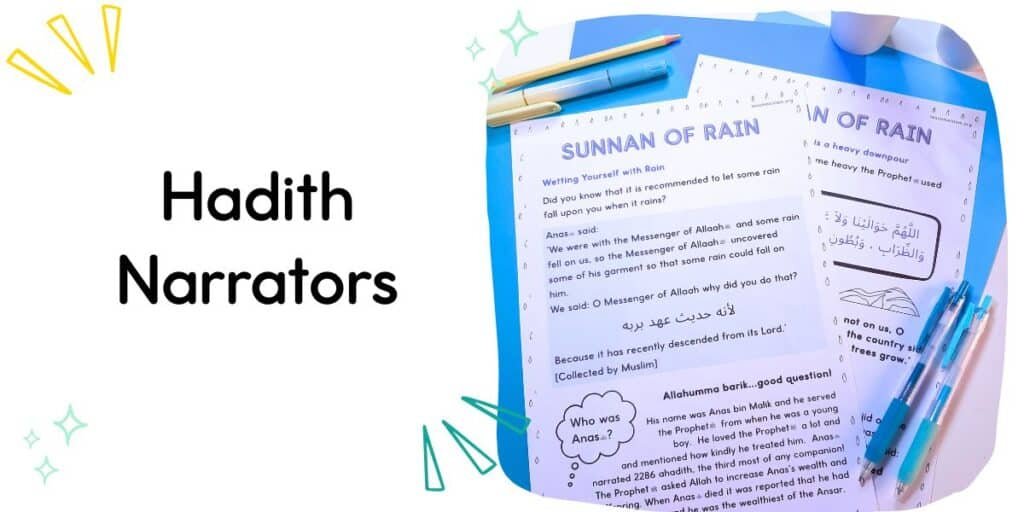
Hadith Narrators: Learning About the Sahaba Through Ahadith
A natural way to teach your child about the Sahaba is through Ahadith. Every time you share a hadith, include a brief biography or description of the companion who narrated it. For example, when teaching the famous hadith about sincerity, you can also introduce your child to Umar bin Al-Khattab.
It was narrated from ‘Umar bin Al-Khattāb (radiyallāhu ‘anhu) that the Prophet (salallāhu ‘alaihi wasallam) said:
“The reward of deeds depends upon the intentions, and every person will get the reward according to what he intended. So whoever emigrated for worldly benefits or for a woman to marry, his emigration was for what he emigrated for.” (Al-Bukhāri, no. 1)
The seven Sahaba who narrated the most ahadith are:
- Abu Hurairah, ‘Abdur Rahmān bin Sakhr ad-Dawsi (radiyallāhu ‘anhu), (d.59H), narrated 5,347 ahadith.
- ‘Abdullah ibn ‘Umar ibn al-Khattāb (radiyallāhu ‘anhumā), (d.73H), narrated 2,630 ahadith.
- Anas bin Mālik (radiyallāhu ‘anhu), (d.93H), narrated 2,286 ahadith.
- ‘A’ishah bint Abi Bakr, Umm ul-Mu’mineen (radiyallāhu ‘anhumā), (d.58H), narrated 2,210 ahadith.
- ‘Abdullah Ibn ‘Abbās (radiyallāhu ‘anhumā), (d.68H), narrated 1,660 ahadith.
- Jābir bin ‘Abdillah al-Ansāri (radiyallāhu ‘anhumā), (d.78H), narrated 1,540 ahadith.
- Abu Sa’eed al-Khudri, Sa’d bin Mālik bin Sinān (radiyallāhu ‘anhu), (d.74H), narrated 1,170 ahadith.
In the Sunnan of Rain free resource, you’ll find a mini-biography about Anas Ibn Malik (may Allah be pleased with him) alongside the ahadith he narrated. You can download it for free here to make your lessons even more engaging.
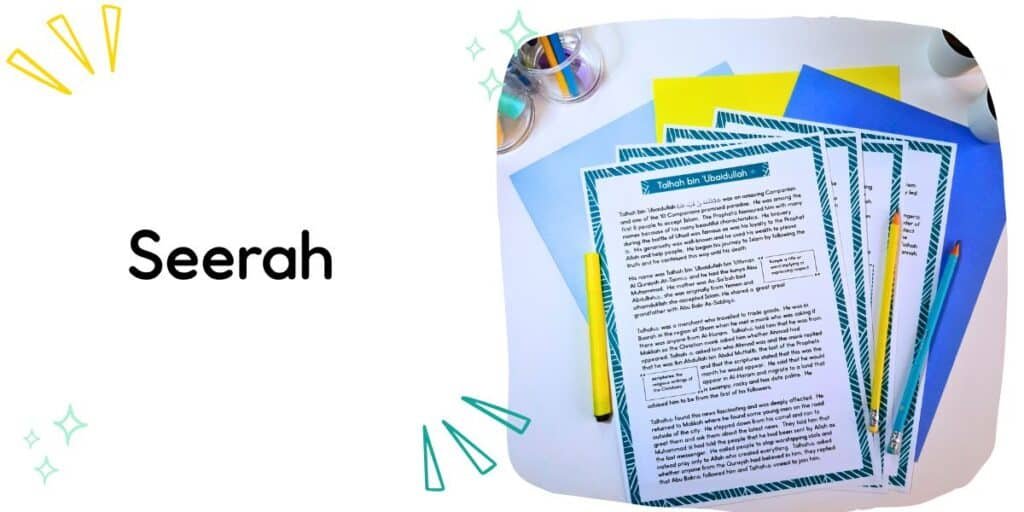
Seerah: Bringing the Sahaba to Life
Seerah is a favorite subject for many children because it’s told as a captivating life story. The Sahaba who appear in the Seerah often leave a lasting impression on kids. When each companion is mentioned, it’s a great chance to share a little background about them.
This also helps children form a connection to the Sahaba by seeing how our beloved Prophet interacted with them, loved them, and was supported by them. For example, when they learn how Talha bin Ubaidallah (may Allah be pleased with him) defended the Prophet (may Allah raise his rank and grant him peace) from an arrow with his own hand, it makes a powerful impact.
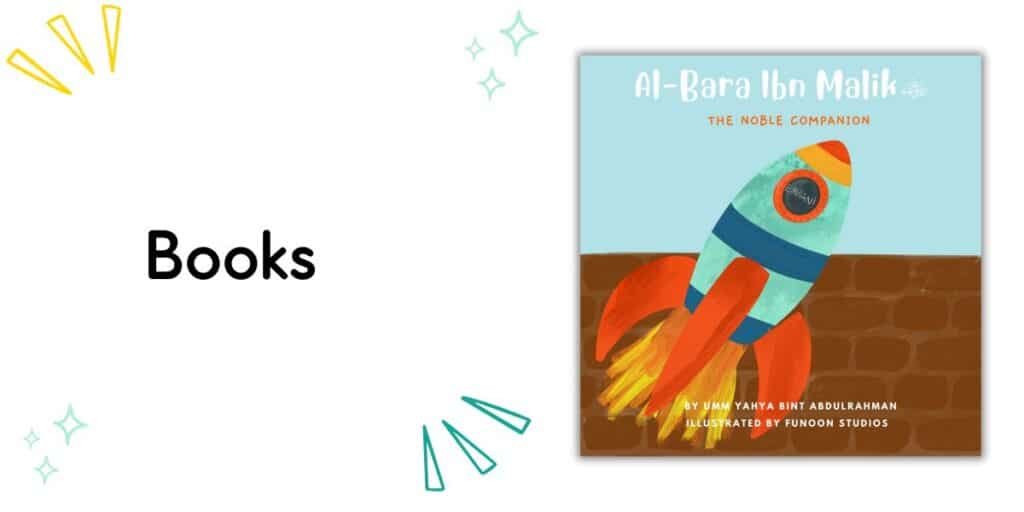
Books: Fun Ways to Learn About the Sahaba
Books are an excellent way to teach young children about the Sahaba. Picture books, in particular, grab their attention, and engaging text can teach them without it feeling like a lesson. However, it’s essential to ensure that the books you use don’t contain any depictions of the Sahaba, even from behind.
I’d recommend the following books about the companions:
Al-Bara Ibn Malik (May Allah be pleased with him): The Noble Companion
I Want To Be Like The Ten Promised Paradise
I Want To Be Like The Prophet’s Wives
These are a great way to introduce young children to the lives of the Sahaba in a memorable and enjoyable way.
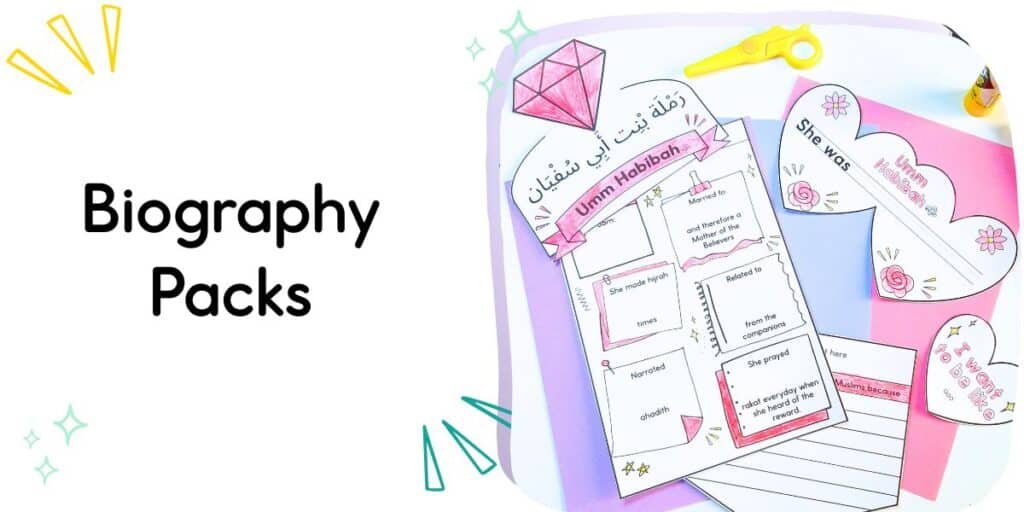
Biography Packs: Deep Dives Into Sahaba’s Lives
Another method to teach your kids about the Sahaba is by focusing on the biography of one companion at a time. This approach allows children to learn about their entire life, including their character and how they served Islam. For companions like ‘Umar bin Al-Khattab (may Allah be pleased with him), it’s important to cover his contributions after the Prophet’s death, as many lessons can be learned from his leadership as Caliph.
There are several free Sahaba biography packs, such as Ja’far bin Abi Talib, Abu Ubaidah bin Jarrah, and the female companion who used to clean the Prophet’s masjid in Madinah (may Allah be pleased with them), available in the free resource library. Get your free biography packs here to make learning about the Sahaba fun and engaging for your kids.
A great way to structure lessons about the Sahaba is through collections such as:
- The 10 Promised Paradise
- The Mothers of the Believers
- Child Companions
- The 7 Sahaba Who Narrated the Most Ahadith
I honestly struggled to find suitable resources for teaching my kids about the sahaba. The worksheets I found were either just questions without any information included or they included inauthentic information. As a result I created a few different collections for other Muslim parents. They are available on Etsy, TpT and the Teach Me Islam Website Shop.
Mothers of the Believers
Child Companions Individual Packs:
10 Promised Paradise
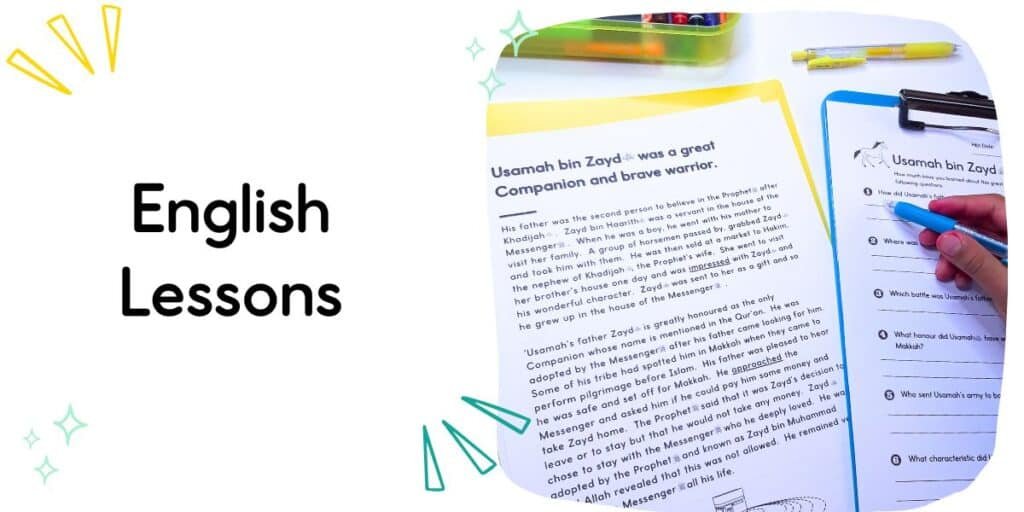
English Lessons: Combining Islamic Studies and Language Skills
If you’re a homeschool parent, or any parent really, you know it can feel overwhelming trying to cover everything—Islamic education, language, math, science—it all adds up. But you can actually combine Islamic Studies with English by using the biographies of the Sahaba as the basis for comprehension passages or even non-fiction writing units.
In the child Sahaba packs, there’s a passage about a child companion, followed by worksheets that include vocabulary matching, inference exercises, comprehension questions, and summary writing. This not only helps children engage deeply with the biographies but also strengthens their language skills.
You can check out an example of Anas bin Malik here to learn more and see how these resources can support your child’s learning.

Free resources to help you teach kids
I hope you have found these suggestions for teaching your kids about the sahaba useful. If you would like to gain access to the free resource library full of varied resources to help you teach your child then sign up HERE.
Other blog posts you’ll enjoy inshaAllah:
10 Child Sahaba to Teach Your Muslim Kids About
How to create Islamic comprehension passages: a step-by-step guide

